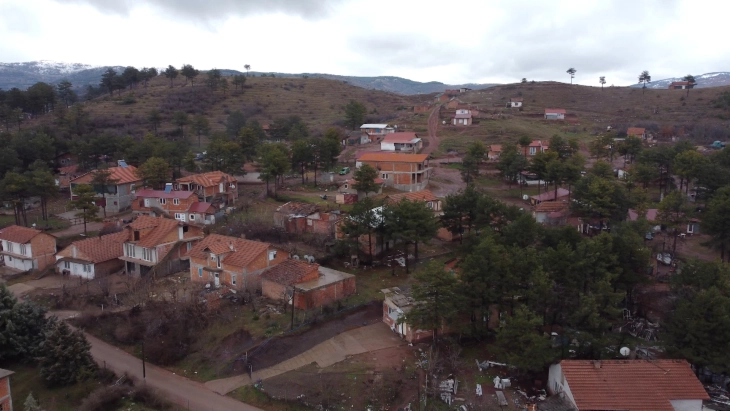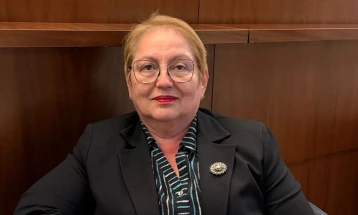Nearly 300,000 illegal constructions legalized
- A total of 296 810 illegally constructed objects have been legalized so far in North Macedonia, having been granted paperwork that consisted of application to the municipality, a geodetic statement and a confirmation of paid utility bills. A new legalization law has been in the works for a while in Parliament, and after the recent devastating earthquakes in Turkiye and Syria, experts from this sphere say that potential future legalization procedures must be carried out with an architectural project and statics control.
- Post By Ivan Kolekevski
- 15:33, 7 March, 2023

Skopje, 7 March 2023 (MIA) – A total of 296 810 illegally constructed objects have been legalized so far in North Macedonia, having been granted paperwork that consisted of application to the municipality, a geodetic statement and a confirmation of paid utility bills. A new legalization law has been in the works for a while in Parliament, and after the recent devastating earthquakes in Turkiye and Syria, experts from this sphere say that potential future legalization procedures must be carried out with an architectural project and statics control.
“In case there is a new law on legalization of illegal constructions, it shouldn’t only be done with a geodetic statement but also with an architectural project and statics control so as to guarantee that these buildings are safe to live in,” says Nikola Velkovski of the Macedonian Chamber of certified architects.
The recent devastating earthquakes in Turkiye and Syria should be a lesson for future construction operations and treatment of building safety, Velkovski adds.
Back when the law on treatment of illegal buildings was adopted, the request for more documents other than the geodetic statement was rejected.
“There was a misunderstanding, and we, as a profession, were excluded from the process. Our request was for there to be an architectural project and control of static elements to guarantee that these buildings are safe to live in. They did not do so and only included the geodetic statement. We insist now that what happened in Turkiye and Syria serves as a lesson, for architectural projects to be created and for expert controls and checks of the construction system to be performed,” says Velkovski.
It is a fortunate circumstance that individual homes have been legalized the most, while apartment buildings with attachments and upgrades were few and far between, he points out.
He says that the possible new law is unfair to those who followed procedures and paid the fees, noting that the stability and safety of the facilities and their inhabitants are at risk.
Vlatko Sheshov, director of the Institute of Earthquake Engineering, said in an interview with MIA that when it comes to building safety, illegally constructed buildings, attachments and taking down inside walls in apartments are a weak link.
“These are some of the key segments where we should and must work more so that we can talk about a general image of safe buildings. These illegally constructed buildings, they may be good, they may be bad, but there is no evidence of their safety. We have limited information, meaning that a geodetic statement, a statement from the owner and utility bills are enough to legalize them and register them,” Sheshov says.
The Agency of Real Estate Cadastre tells MIA that the property of 296,810 facilities have been written in after getting a legalization decision from their municipalities.
The legalization of illegally constructed buildings in this country was first made possible with the 2011 Law on Treatment of Illegally Constructed Buildings. The law and deadlines to submit legalization requests were amended several times, and the latest amendment in 2021 enabled its application to act on the cases for around 140,000 requests over the next 5 years.
At the same time, a new law on legalization was introduced to Parliament that would encompass illegal buildings constructed up until January 2021, with an addition of fines. According to initial estimates, it would encompass over 50,000 requests, but the final number will be known if it is eventually voted in and the possibility to submit requests opens up.
The Ministry of Transport and Communications confirms that the status of the introduced law remains unchanged.
“We can’t initiate a debate because it is currently in parliamentary procedures,” the Ministry of Transport says.
The draft law to acquire legal status for illegally constructed buildings was introduced in December 2021, which would allow for the legalization of illegal buildings constructed up to January 2021. A scalar way to calculate the legalization fee is stipulated, which goes as follows: for a building up to 80 square meters, the amount of the fee increases 50% from the baseline utility costs, and for buildings larger than 80 square meters, the fee increases by 100%.
Socially vulnerable citizens and citizens with incomes that don’t exceed an annual net income of Mden 180,000 will not pay the legalization fee, increasing the range of citizens who are exempt from this.
The Association of Self-Government Units (ZELS) says they did not start a debate concerning the draft law, and the mayors say they will be able to give proposals and share their experiences through ZELS in the future.
In Gazi Baba, the municipality with the highest number of legalization requests, they say that their services have been working intensely on finishing the initiated procedures to determine the legal status of illegally constructed buildings.
“In accordance with the dynamics defined by the municipality, there has been significant progress to solve the cases, which means a lot to our fellow citizens. Keeping in mind this is an extensive procedure, the process of legalization entails the previous fulfillment of necessary legal conditions and then adopting a legalization decision,” the municipality told MIA.
Since the last power shift in the municipality, over 2,000 decisions to legalize illegally constructed buildings have been adopted so far.
They also said that the municipality will be obligated to apply the new draft law on legalization, should it be adopted by Parliament.
“We won’t comment on its contents and stipulated conditions, given it is not yet finalized and approved by Parliament, but we believe there should be an additional expert debate within ZELS, where we, as a local self-government, would be able to share previous experiences and make suggestions to improve the situation,” says the municipality.
Lidija Velkovska
Translated by Dragana Knezhevikj
Photo: MIA Archive







